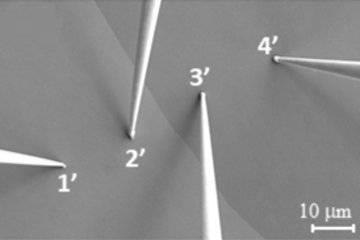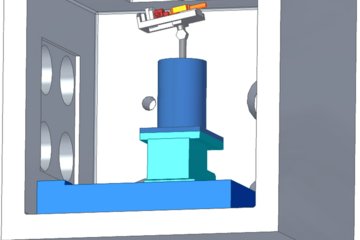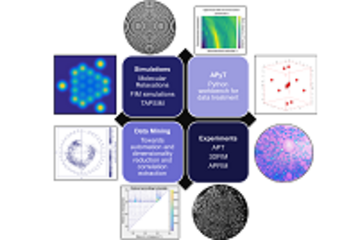All genres
1561.
Thesis - Master
Phase diagrams derived from optimized empirical potentials. Master, Ruhr-Universität Bochum (2019)
1562.
Thesis - Master
Automated Calculations for Charged Point Defects in Magnesium Oxide and Iron Oxides. Master, Ruhr-Universität Bochum, GermanyRuhr-Universität Bochum, Bochum, Germany (2016)
1563.
Thesis - Master
Ab initio investigations on the energetics and kinetics of defects in Fe–Al alloys. Master, Ruhr-Universität Bochum, Bochum, Germany (2014)
1564.
Thesis - Master
Chemical Trends in the Yttrium-Oxide Precipitates in Oxide Dispersion Strengthened Steels: A First-Principles Investigation. Master, Ruhr-Universität Bochum, Bochum, Germany (2012)
1565.
Thesis - Master
Ab-initio study of formation and interaction energies in steel and their relations to the solubility limit of carbon in austenite and ferrite. Master, RWTH-Aachen, Aachen, Germany (2007)
1566.
Thesis - Bachelor
Combined Ab Initio and Kinetic Monte-Carlo Studies on Nano-Precipitates in Steels. Bachelor, Ruhr-Universität, Bochum, Germany (2010)
1567.
Report
Ab-initio simulation and experimental validation of beta-titanium alloys. (2008)
1568.
Issue
Advanced Calculations for Defects in Solids - Electronic Structure Methods - Preface (Special issue). Physica Status Solidi B 248, (1) (2011), 17-18 pp.
1569.
Other
Organizer of the "BiGmax Workshop 2022 on Big-Data-Driven Materials Science". (2022)
1570.
Preprint
Metastable defect phase diagrams as a tool to describe chemically driven defect formation: Application to planar defects. arXiv (2023)
1571.
Preprint
Constructing phase diagrams for defects by correlated atomic-scale characterization. arXiv (2023)
1572.
Preprint
Tailoring negative pressure by crystal defects: Crack induced hydride formation in Al alloys. arXiv (2022)
1573.
Preprint
Effect of Sn on Generalized Stacking Fault Energy Surfaces in Zirconium and its Hydrides. arXiv (2022)
1574.
Preprint
Systematic Structure Datasets for Machine Learning Potentials: Application to Moment Tensor Potentials of Magnesium and its Defects. arXiv (2022)
1575.
Preprint
Accurate computation of chemical contrast in field ion microscopy. arXiv (2022)
1576.
Preprint
Computationally accelerated experimental materials characterization -- drawing inspiration from high-throughput simulation workflows. arXiv (2022)
1577.
Preprint
Origins of the hydrogen signal in atom probe tomography. arXiv (2021)











